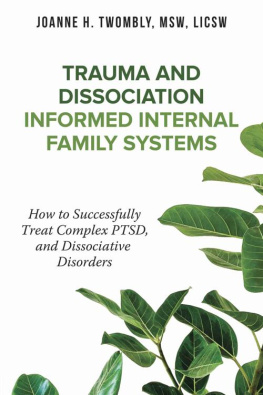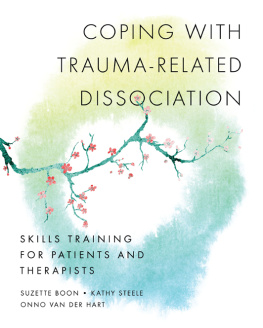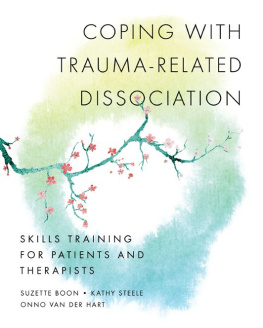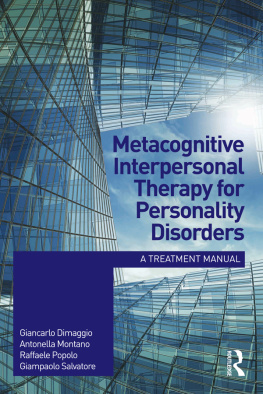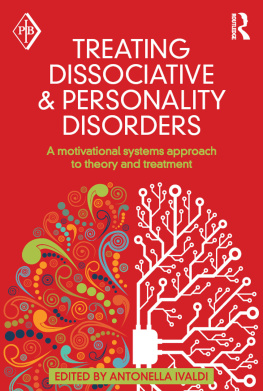Standing in the Spaces
1998 by Psychology Press
First paperback printing 2001
All rights reserved. No part of this book may be reproduced, stored, or transmitted in any way whatsoever without the prior written permission of the publisher.
Index by Leonard S. Rosenbaum
Journal, Book, and Publisher Acknowledgments
The author gratefully acknowledges the following publications in whose pages versions of most chapters first appeared: Journal of the American Academy of Psychoanalysis [chapter 6]; Psychoanalytic Psychology [chapter 2]; Contemporary Psychoanalysis [chapters 2, 3, 4, 5, 7, 8, 9, 14 and 17]; Psychoanalytic Dialogues [chapters 10, 15 & 16, and chapters 13 and 18, which are derived from the earlier forms of these essays but have been materially rewritten and expanded for this volume]; Self Psychology: Comparisons and Contrasts (ed. D. W. Detrick and S. P. Detrick, The Analytic Press 1989) [chapter 11].
The author thanks also the Journal of the American Psychoanalytic Association, the Journal of Clinical Psychoanalysis, Contemporary Psychotherapy Review, Dynamic Psychotherapy, and The Analytic Press, publisher of Pioneers of Interpersonal Psychoanalysis (ed. D. B. Stern, C. H. Mann, S. Kantor & G. Schlesinger, 1955) for permission to use in chapters 1 and 19 some selected content adapted from referenced articles not included as chapters.
Library of Congress Cataloging-in-Publication Data
Bromberg, Philip M.
Standing in the Spaces: Essays on Clinical Process, Trauma, and Dissociation / Philip M. Bromberg
p. cm.
Includes bibliographical references and index.
ISBN: 0-88163-356-9
1. Psychoanalysis. 2. Psychic trauma. 3. Dissociation (Psychology).
Psychotherapist and patient. I. Title
[DNLM: 1. Psychoanalytic Therapy collected works. 2. Mental Disorderstherapy collected works. 3. Psychoanalytic Theory collected works. WM
460.6B868s 1998]
RC509.B76 1998
616.8917-dc21
DNLM/DLC
| for Library of Congress | 98-29429
CIP |
CONTENTS
4 Empathy, Anxiety, and Reality:
A View from the Bridge (1980)
5 Getting Into Oneself and Out of Ones Self:
On Schizoid Processes (1984)
6 The Use of Detachment in Narcissistic
and Borderline Conditions (1979)
7 The Mirror and the Mask:
On Narcissism and Psychoanalytic Growth (1983)
8 On the Occurrence of the Isakower
Phenomenon in a Schizoid Patient (1984)
10 On Knowing Ones Patient Inside Out:
The Aesthetics of Unconscious Communication (1991)
11 Interpersonal Psychoanalysis and Self Psychology:
A Clinical Comparison (1989)
12 Shadow and Substance:
A Relational Perspective on Clinical Process (1993)
13 Psychoanalysis, Dissociation, and
Personality Organization (1995)
14 Resistance, Object Usage, and
Human Relatedness (1995)
15 Hysteria, Dissociation, and Cure:
Emmy von N Revisited (1996)
16 Speak! That I May See You:
Some Reflections on Dissociation, Reality, and Psychoanalytic Listening (1994)
17 Standing in the Spaces:
The Multiplicity of Self and the Psychoanalytic Relationship (1996)
18 Staying the Same While Changing:
Reflections on Clinical Judgment (1998)
19 Help! Im Going Out of Your Mind
INTRODUCTION
What is the use of a book, thought Alice, without pictures or conversations?
Lewis Carroll, Alices Adventures in Wonderland
I ve always been wary of wordsa perhaps curious opening remark when one considers how many are to follow. As far back as grammar school my stubborn refusal to substitute the grownup language of real reality for the felt reality of my inner experience would get me into no end of trouble with the people whose job it was to educate me. My report cards, for example, invariably contained the anticipated note from my teacher: Philip appears to be very bright but he seems to live in his own world. I never know where his mind is, and nothing I do or say seems to change that. My parents, who knew first hand what my teacher was talking about, would nod their heads with both recognition and resignation because they didnt know how to deal with it either. To the adults who were trying to help me pay attention, my ability to disappear inside, as if in another world, was clearly a bad habit I needed to change. I, of course, never thought about it that way and couldnt understand why it seemed so important to everyone else. So I continued to do it, and apparently to such an extent that my mother hit upon the strategy of making me repeat what she said, hoping thereby to defeat my efforts to tune her out. I can still recall the day she realized that her technique didnt work. Standing in front of me, hands on hips, she growled; You never listen to me. You never hear a word I say! Im going to tell you something right now, and I want you to repeat it to me exactly. She then told me whatever the something was, and I did indeed repeat it word for word, exactly as she said it. She looked at me with a strange combination of bemusement and consternation. I dont know how you did it, she said, but I know that even though you were listening you still didnt hear it. I dont know how you did it, but you did it! She was, needless to say, absolutely right about my not processing what I was taking in while I was being educated, but more importantly, her sense of humor about it probably contributed a great deal toward my feeling more or less comfortable with my insideness as I got older. As Langan (1997, p. 820) wryly put it, What is one to do with the fractionating discovery that, as the poet Allen Ginsberg remarked, My minds got a mind of its own? And who knows? Perhaps it was because of this that I am now able to find humor in similar moments with patientsmoments that might otherwise hold a potential to become grimly adversarial as our realities collide.
I begin with this vignette from my own childhood because it touches what may be my earliest awareness of what I hold to be the heart of personality growththe paradox of being known but still remaining private, of being in the world but still separate from it. This paradox is often as confounding to psychoanalysts as it was to the adults in my early life. The acquisition of new self-experience is a process that is not mediated by language alone. There must be communication with an other at a felt level of personal validity in order for linguistic content to be integrated pleasurably and safely as self-experience. The analytic situation is designed as a negotiated therapeutic relationship to bring about this integration.
The following chapters are a selection of clinical essays written over the last twenty years. They can be read simply as a book of collected papers, or they can be read, simultaneously, as the unfolding of a clinical perspectivea series of reflections on the analytic relationship with its own implicit order, its own progression of ideas, and its own internal dialectic. My hope is that most readers will find this latter approach more congenial to their taste. How a reader reads will partially depend, of course, on the extent to which the growth of his own clinical experience and the historical development of his own ideas share some common ground with the evolution of mine over the past two decades. Writers need readers. In her 1996 novel, Hallucinating Foucault, Patricia Duncker argues that what writers have for centuries referred to as the Muse is none other than the reader for whom they write. Through the voice of her protagonist she puts it this way:
I have never needed to search for a muse. The muse is usually a piece of narcissistic nonsense in female form. I would rather a democratic version of the Muse, a comrade, a friend, a traveling companion, shoulder to shoulder, someone to share the cost of this long, painful journey. Thus the Muse functions as collaborator, sometimes as antagonist, the one who is like you, the other, over against you. For me the Muse is the other voice. Through the clamoring voices every writer is forced to endure there is always a final resolution into two voices. But the writer and the Muse should be able to change places, speak in both voices so that the text shifts, melts, changes hands. The voices are not owned. They are indifferent to who speaks. They are the source of writing. And yes, of course the reader is the muse [pp. 5859].
Next page

